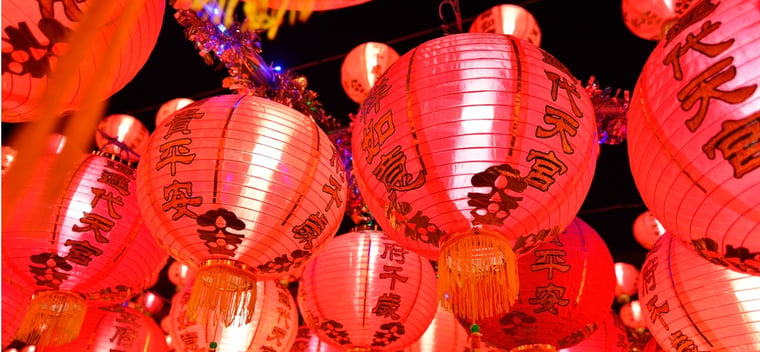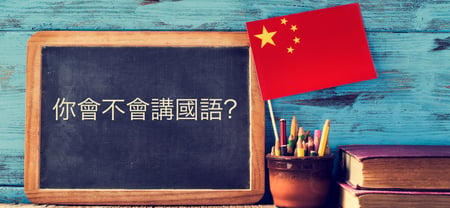Simplified Chinese vs Traditional Chinese

With approximately 1.197 billion speakers, Chinese is the most widely spoken language in the world!
Naturally, there is a great and ever-growing need to translate content into the Chinese language. But when you’re looking to create content targeted toward the nation of China or native Chinese speakers throughout the world, there are some important considerations that will influence whether you need Simplified Chinese or Traditional Chinese.
Here at LinguaLinx, we help clients all over the world translate their websites and documents (from legal to healthcare to educational) into 98% of the world's known languages.
This article covers the difference between Simplified Chinese and Traditional Chinese.
Simplified Chinese vs Traditional Chinese
- Simplified Chinese uses fewer characters and strokes and is used prominently throughout mainland China as well as Singapore and Malaysia.
- Traditional Chinese has a longer history of use and is more complex using more characters and strokes per character and is used broadly in Hong Kong, Macau, Taiwan and is still used by Chinese communities around the world.
The Role of Traditional Chinese
As its name indicates, the traditional form of Chinese has been used over thousands of years and countless generations across China.
Written Chinese emerged during the Han Dynasty so Traditional Chinese characters have been around for centuries.
Although the mainland uses the simplified version, Hong Kong and Taiwanese citizens use the traditional version of the language, largely due to a political separation that kept them apart from the mainland.
Relevant Guide: A Guide to Doing Business in China
Traditional Chinese is also used by overseas Chinese communities throughout the world such as the United States, Canada, and Australia. This trend may shift as people migrate from mainland China.
The History and Origin of Simplified Chinese
Simplified Chinese is a relatively modern concept. In the middle of the twentieth century, the 1950s and 1960s, the government of the People’s Republic of China sought to simplify the written form of the language, specifically Chinese characters to promote literacy for both native and non-native speakers.
It was at that point that two distinct versions of Chinese were introduced into general use: Traditional Chinese and Simplified Chinese.
When Simplified Chinese was first created, the idea was that there would be no difference in the languages themselves, but only in the methodology used to create the form of the Chinese characters.
Simplified Chinese characters use fewer strokes and are just easier to write than Traditional Chinese characters.
The other primary influence on the development of Simplified Chinese has been the political unrest between the People’s Republic of China and Hong Kong and Taiwan over the last several decades.
This fissure has created some small variations in how different dialects and written forms of Chinese are used. These small variations make Chinese a particularly challenging language for a translator, as they must understand precisely where the document is coming from in order to translate it effectively.
Relevant Article: The Difference Between Cantonese and Mandarin
But ultimately, the Chinese language and all its subsequent dialogues represent a long and storied history of written and spoken language that dates back thousands of years. Such a history is worth respecting and studying, particularly now when Chinese is among the most widely spoken languages on the planet.
Choosing Between Simplified Chinese & Traditional Chinese
If you are looking to reach Chinese-speaking communities in the United States, which do you choose? Historically, these communities use Traditional Chinese. However, this is changing as more people immigrate to the United States from mainland China.
Signage has traditionally been translated into Traditional Chinese, but recently, institutions such as the New York City Transit Authority have made the switch to Simplified Chinese.
The version you choose will depend largely on factors like:
- Who is your audience?
- Where are they located?
- What is the purpose of the translation?
- In some cases, regulations may dictate your needs.
For example, in Section 1557 of the Affordable Care Act, regarding language access in healthcare, the Office for Civil Rights (OCR) specifies which dialect to use [when one of the languages listed in their top 15 per state has one or more written or spoken dialects.]
In the case of written Chinese, they specify Traditional Chinese. However, while Traditional Chinese is still required for many purposes the future will hold an important role for Simplified Chinese.
The more modern version of the written language has evolved over time largely fueled by the influence of the internet. New words have sprung up out of necessity — words like “internet,” “hard drive,” “smartphone,” “software,” and so on.
Naturally, these new words are expressed differently in Cantonese and Mandarin, as well as in Simplified Chinese and Traditional Chinese.
If you are not sure which choice is best for your needs, a trusted translation professional can help guide you in the right direction.
Other Translation Considerations
Simplified and Traditional Chinese refers only to the written word while Mandarin and Cantonese refer to dialects of the spoken word. Therefore Mandarin or Cantonese cannot be used for document translation nor can interpretation be done in Simplified or Traditional Chinese.
Translation Made Simple
If you have any translation, localization, or interpretation needs, LinguaLinx can help.
With Lingualinx, you won't ever have to worry about your message getting mixed up, mistranslated, or ending up embarrassingly incomprehensible. You know you're in good hands with our ISO 17100 compliance, twenty years of professional translation experience, and the organizations whose trust we've earned.
To chat with us about your language translation needs, click on the link below.
Continue Learning with These Helpful Articles:
- How to Create a Translation Glossary
- How Much Do Translation Services Cost?
- Qualifications of a Website Translator
To book an appointment, click on the link below to begin your Chinese translation journey -






